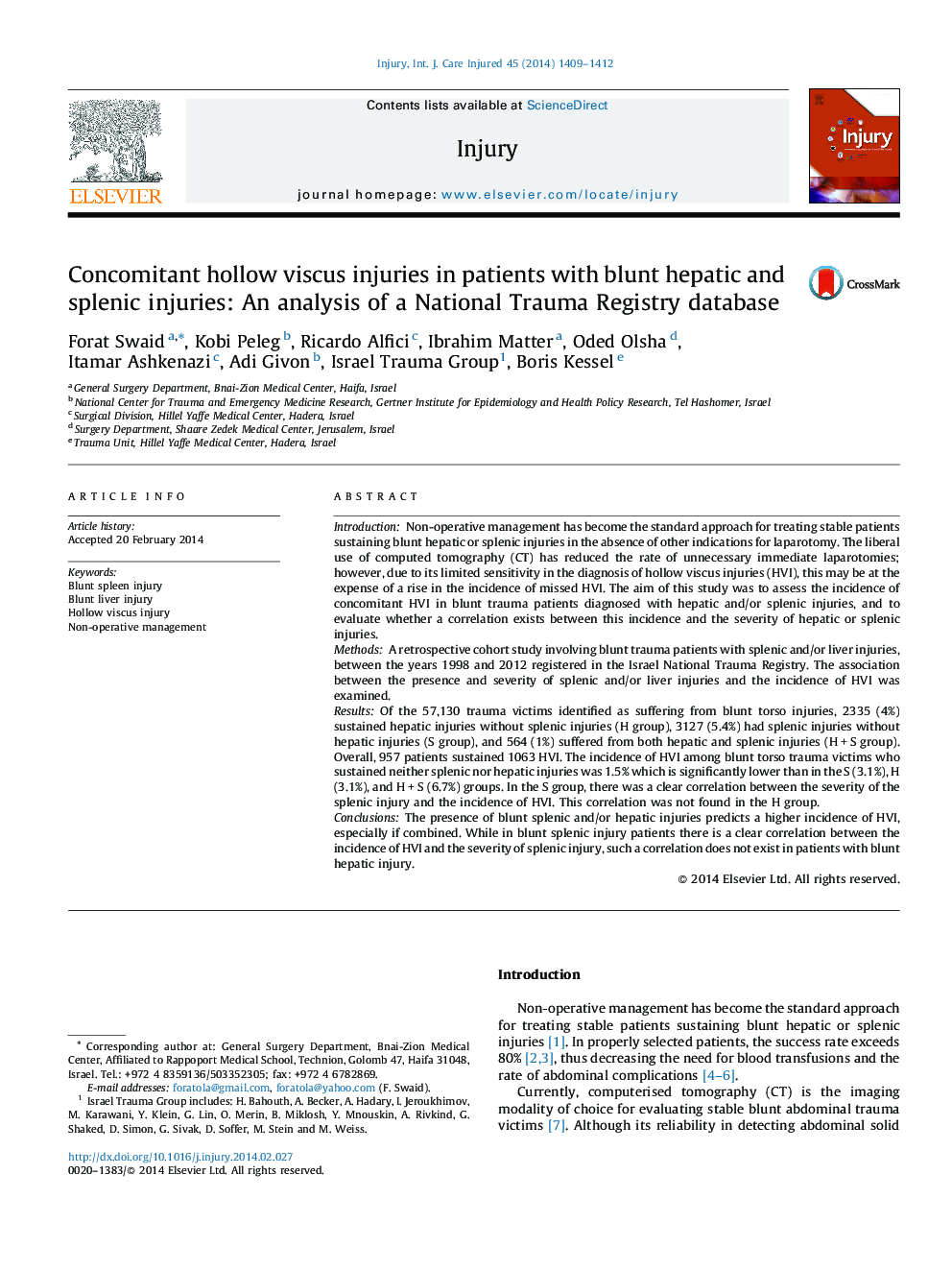| کد مقاله | کد نشریه | سال انتشار | مقاله انگلیسی | نسخه تمام متن |
|---|---|---|---|---|
| 6083587 | 1205999 | 2014 | 4 صفحه PDF | دانلود رایگان |
IntroductionNon-operative management has become the standard approach for treating stable patients sustaining blunt hepatic or splenic injuries in the absence of other indications for laparotomy. The liberal use of computed tomography (CT) has reduced the rate of unnecessary immediate laparotomies; however, due to its limited sensitivity in the diagnosis of hollow viscus injuries (HVI), this may be at the expense of a rise in the incidence of missed HVI. The aim of this study was to assess the incidence of concomitant HVI in blunt trauma patients diagnosed with hepatic and/or splenic injuries, and to evaluate whether a correlation exists between this incidence and the severity of hepatic or splenic injuries.MethodsA retrospective cohort study involving blunt trauma patients with splenic and/or liver injuries, between the years 1998 and 2012 registered in the Israel National Trauma Registry. The association between the presence and severity of splenic and/or liver injuries and the incidence of HVI was examined.ResultsOf the 57,130 trauma victims identified as suffering from blunt torso injuries, 2335 (4%) sustained hepatic injuries without splenic injuries (H group), 3127 (5.4%) had splenic injuries without hepatic injuries (S group), and 564 (1%) suffered from both hepatic and splenic injuries (HÂ +Â S group). Overall, 957 patients sustained 1063 HVI. The incidence of HVI among blunt torso trauma victims who sustained neither splenic nor hepatic injuries was 1.5% which is significantly lower than in the S (3.1%), H (3.1%), and HÂ +Â S (6.7%) groups. In the S group, there was a clear correlation between the severity of the splenic injury and the incidence of HVI. This correlation was not found in the H group.ConclusionsThe presence of blunt splenic and/or hepatic injuries predicts a higher incidence of HVI, especially if combined. While in blunt splenic injury patients there is a clear correlation between the incidence of HVI and the severity of splenic injury, such a correlation does not exist in patients with blunt hepatic injury.
Journal: Injury - Volume 45, Issue 9, September 2014, Pages 1409-1412
